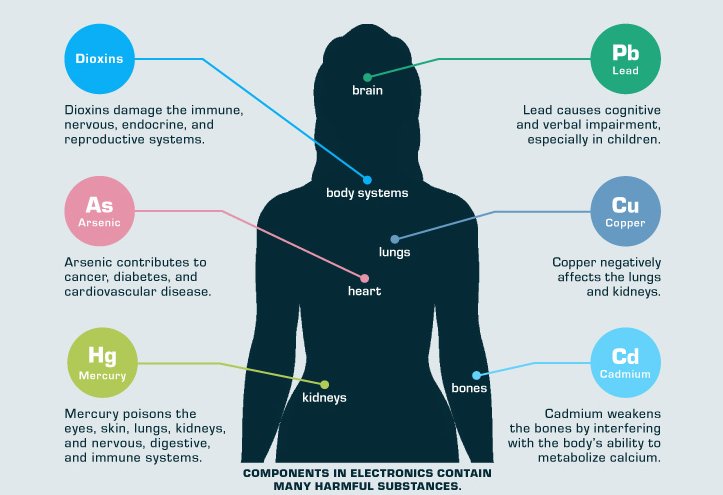Impacts of E-Waste on Health
Recycling of valuable elements contained in e-waste has become a source of income mostly in the informal sector of developing or emerging industrialized countries. However, primitive recycling techniques such as burning cables for retaining the inherent copper expose both adult and child workers as well as their families to a range of hazardous substances.
E-waste-connected health risks may result from direct contact with harmful materials such as lead, cadmium, chromium, brominated flame retardants or polychlorinated biphenyls (PCBs), from inhalation of toxic fumes, as well as from accumulation of chemicals in soil, water and food. In addition to its hazardous components, being processed, e-waste can give rise to a number of toxic by-products likely to affect human health. Furthermore, recycling activities such as dismantling of electrical equipment may potentially bear an increased risk of injury.
Other health effects
DNA breaks can increase the likelihood of developing cancer. DNA damages are a special problem in non-dividing or slowly dividing cells, where unrepaired damages will tend to accumulate over time. On the other hand, in rapidly dividing cells, unrepaired DNA damages that do not kill the cell by blocking replication will tend to cause replication errors and thus mutation. Elevated Reactive Oxygen Species (ROS) levels can cause damage to cell structures.

